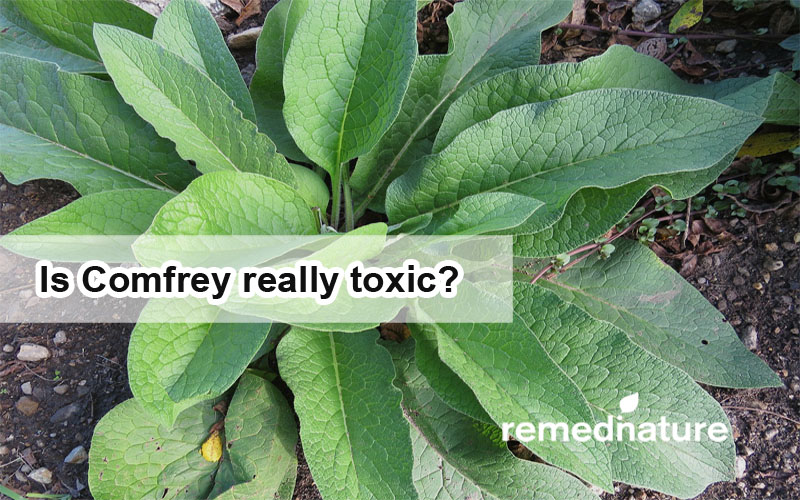Comfrey is one of nature’s greatest medicinal herbs and has been used since about 400 BC as a healing herb. Throughout the ages comfrey has acquired an unrivalled reputation as a healing herb. Greeks and Romans used comfrey to stop heavy bleeding, treat bronchial problems, and heal wounds and broken bones. Indeed, its name derives from the Latin ‘conferre’, meaning ‘bring together’ or ‘grow together’. In Medieval times, comfrey’s reputation for knitting broken bones flourished and it was commonly referred to as knitbone and often called the heal-all herb. It is also now very popular for arthritic pain.
Comfrey’s most important ingredient is the substance allantoin. Allantoin is believed to be a cell proliferator, able to strengthen skin tissue, promoting the growth and multiplication of cells and thus speeding healing. Recently report shows that another substance in comfrey, pyrrolizidine alkaloids, may cause cancer and liver damage in animal studies, therefore, it is not suggested to use comfrey internally.
For external use of comfrey in the forms of oil, salves and ointments, there are different points of views. Depends on where you gather the information from, if the info is from MDs, clinical centres or third-party institutes websites, they tend to have negative views on the external use of Comfrey; if it is from herbalists or alternative medicine doctors, they tend to have positive views. One of the arguments from herbalists is worth of point out.
“With regards to the warnings that comfrey can cause cancer and liver disease, most herbal practitioners point out that those results were from studies that isolated the pyrrolizidine alkaloids and fed or injected them into animal subjects in doses far higher than any typical usage of comfrey leaf, and that comfrey leaf has been regularly ingested by thousands of people around the world without reported ill effects.”
– from Herbal Remedies Info
Research seems to bear out the claims for the healing properties of comfrey leaf. In one major European study, an ointment based on comfrey proved more effective at relieving both pain and swelling in 142 patients with sprained ankles. In another study with over 300 participants showed that comfrey leaf treatments of varying types (ointments, salves, compresses and other topical applications), were very effective in treating eczema, dermatitis, viral skin infections and ulcers of the lower leg. More recent research in the United States has shown that allantoin, one of comfreys main constituents, breaks down red blood cells, which could account for its ability to help heal bruises and contusions. More researches of healing properties of comfrey can be found here:
www.ncbi.nlm.nih.gov/pubmed/18193693
www.ncbi.nlm.nih.gov/pubmed/22549241
www.ncbi.nlm.nih.gov/pubmed/24280482
www.ncbi.nlm.nih.gov/pubmed/17169543
Is Comfrey toxic? We encourage people to put your own judgement on whether to use comfrey on your body.
Remedinature Comfrey Ointment is made from infused Comfrey Oil and beeswax. The oil infusion uses comfrey leaves from common comfrey. The concentration of PAs is at trace level. It is far less than those used for a lab experiment. In additional, Remedinature products comply with EU cosmetic regulation and they are safe to use externally.

